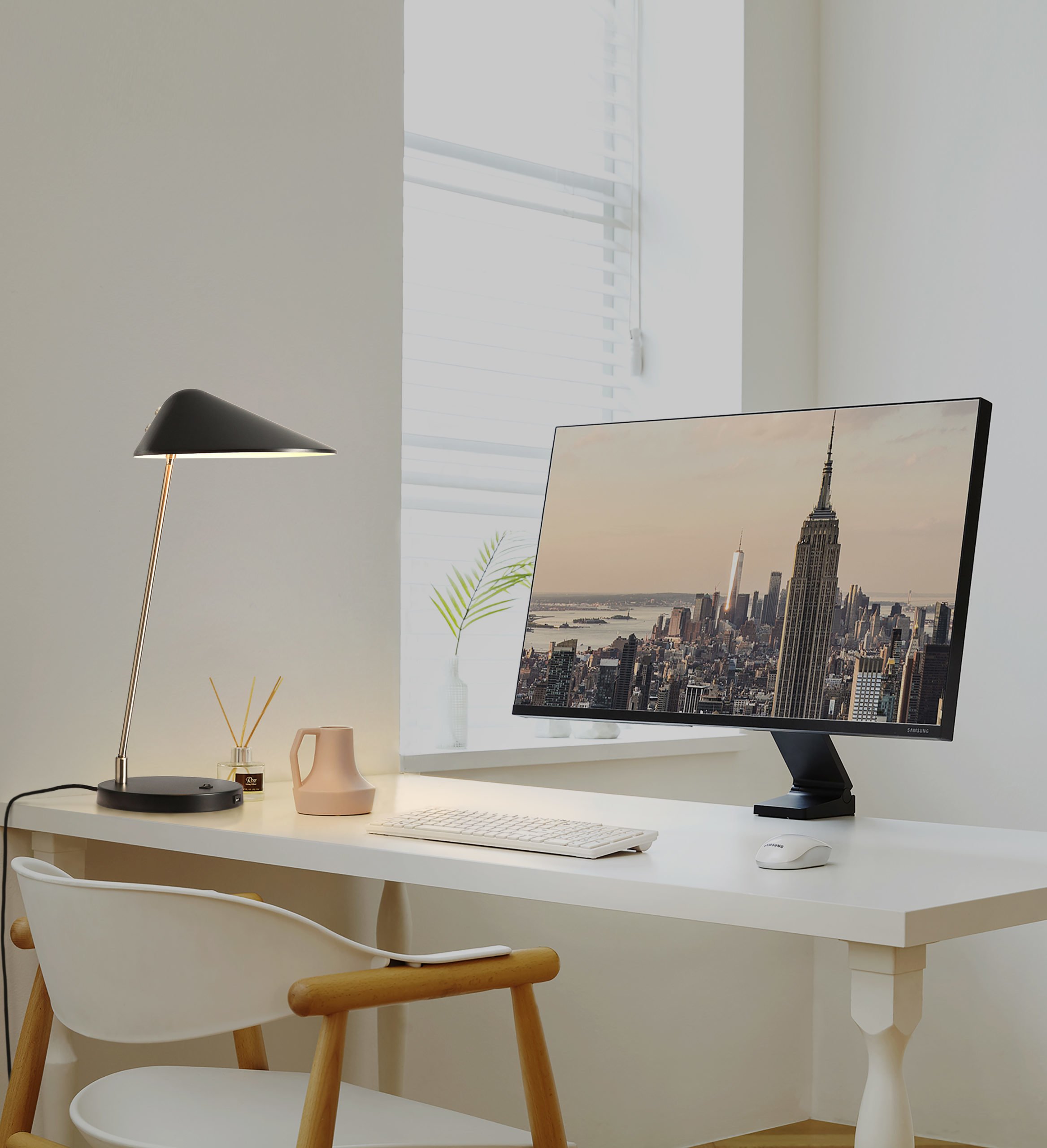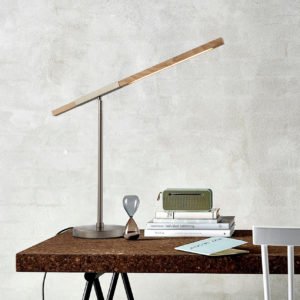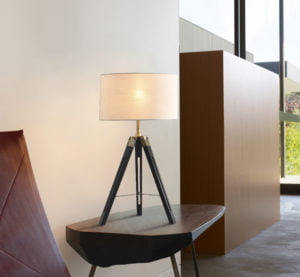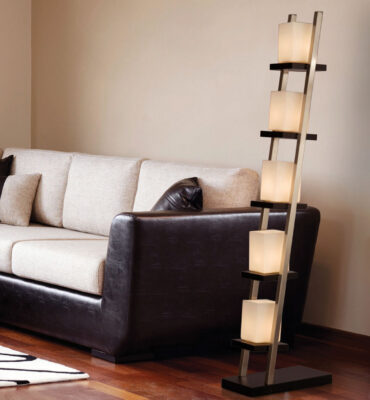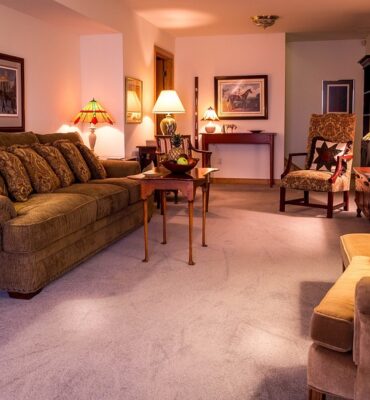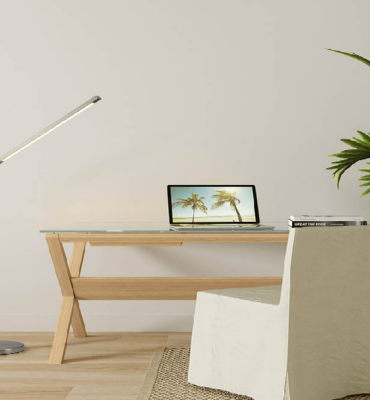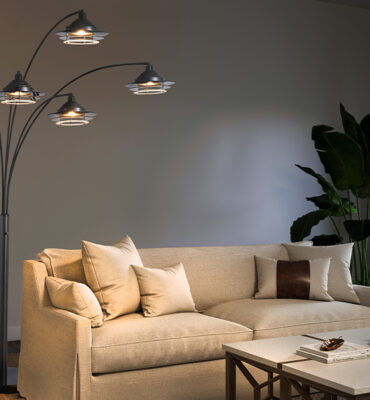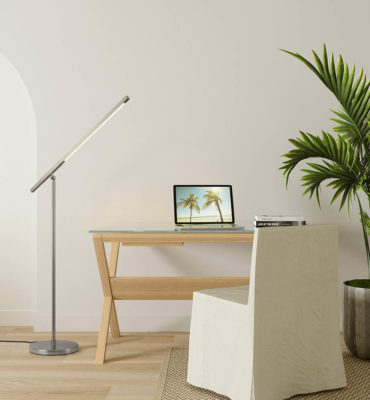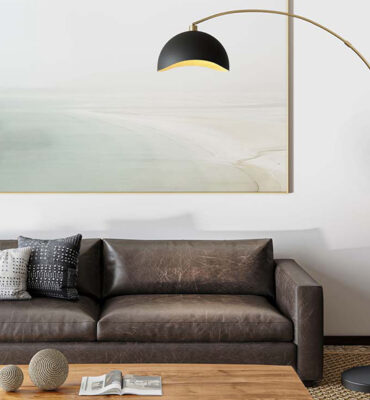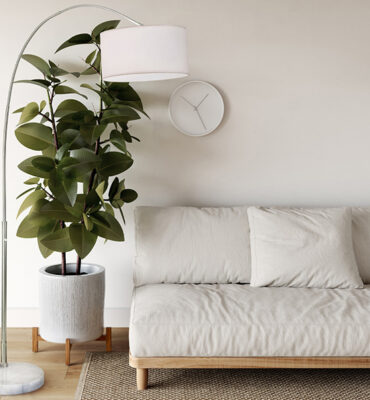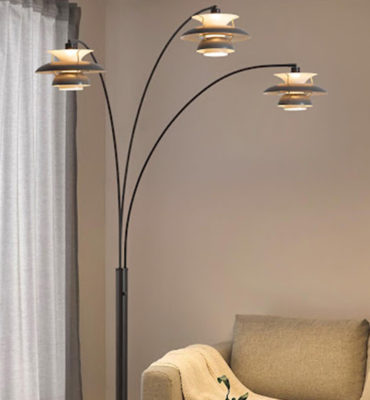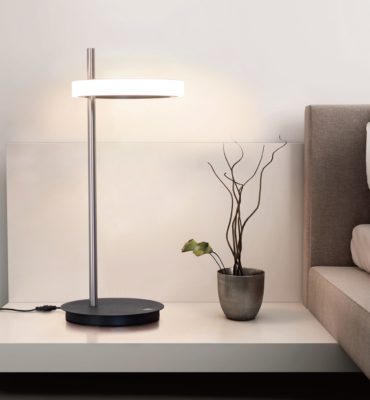Whether your home office light fixtures are used to perform a full-time job, side hustles after a regular 9 to 5, or it’s a place to keep the household running (i.e. paying your bills), setting up a workable office space plays a critical role in all of the above.
Desk chairs and work surfaces are all essential features to consider in your home office, but did you know that the quality and type of lighting you choose in a workspace can have a direct effect on your productivity and comfort? No access to natural light can cloud your mood, lessening your spirits, and working under poor, artificial lighting conditions can cause eyestrain and headaches—all of these side effects limit your ability to work optimally so it’s important to know how to use natural and artificial light sources to your benefit in a home office space.
Relying on one light source—like overhead or recessed light fixtures as many home offices do—for the total illumination of your working environment won’t give you the functional space you need. Combining available natural light with additional light fixtures to the above-mentioned plays an important part in setting up a workable office environment. Here are eight suggestions to consider when it comes to using light in your home office.

1 | Play Up Natural Light
Because the glossy surfaces of computer screens and tablets usually suffer from harsh glares when hit with natural light, many people incorrectly avoid it as a light source in their home office spaces or try to block it out. When used correctly, natural light not only beautifully blends into the artificial lighting of your space, but it is also much easier on your eyes.
Give your workspace a good assessment and see what the available natural light has to offer. When it comes to glossy surfaces, glares, or shadows, it’s all about choosing the right angles. If you’re working off computer screens or tablets and have a window available, try situating your workstation in front of the window if the view from outside isn’t too distracting.
Maybe instead of one window, you have multiple—giving you lots of natural light at your disposal. Place your desk in a north-to-south alignment to avoid shadows while still benefiting from all of the natural light.
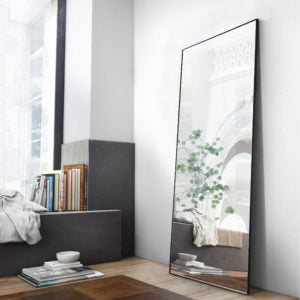
Do you have a problem with accessing any natural light at all? This is where artificial light fixtures and design techniques will play a big part in lighting a home office. Use Mirrors as decorative elements to boost the illusion of natural light by placing them opposite the natural light source of space. The mirrored surface reflects the natural rays of light, brightening up the room while adding intrigue to the interior design of your home office space.
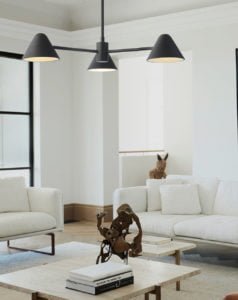
2 | Overhead Lighting: The Foundational Layer
As mentioned, overhead lighting shouldn’t be the sole source of illumination in your home office. However, this type of ambient lighting does do a great job of filling in light that other fixtures just might not be able to reach. So be sure to assess what your overhead lighting offers and try to think of this source as the foundational layer of light.
Lighting your workspace is going to be a team effort. Adding additional layers of light will help increase the functionality of your working environment by eliminating potential glares. It can also alleviate any potential unpleasant repercussions of inadequate lighting, like eyestrain and headaches.
Light layering is an excellent technique to use when it comes to properly illuminating a home office. By taking the three fundamental layers of light—ambient, task, and accent—you can create a dynamic working environment that provides light exactly where you need it.
You can also take this as an opportunity to spruce up your overhead lighting situation. Try adding a pendant light to offer your workspace a visual element in addition to functionality.
3 | Take It to Task Lighting
Task lighting is going to be the most essential element in your home office. The next layer in our lineup after ambient lighting, task lighting brings everything into focus by offering a directional light source so that you can easily concentrate on the task at hand.
Not all tasks require the same intensity level of light, so when you’re browsing the variety of table lamps available for your office space, be sure your task lights come with dimmer capabilities. Too much of anything can be a bad thing, and a flood of focused light can cause eyestrain throughout your workday, so having the ability to adjust the intensity of light will help optimize your productivity and level of comfort.
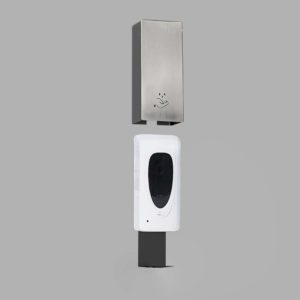
4 | Add Decorative & Accent Lighting
After overhead and task lighting comes the final layer—accent lighting. Once you have your workspace sufficiently set up with exceptional lighting, it’s time to elevate the visual elements of your new home office environment to create a cozy, peaceful space in which you enjoy spending your working hours.
Help improve the interior character of your space with well-placed decorative and accent lighting. Draw attention to décor pieces or highlight mantels and shelving units with the visual appeal of accent lights. Some accent lights can also work as corrective lighting solutions, offering soothing illumination to soften any direct or harsh lighting from overhead or task lamps.
In addition to accent lighting, consider adding decorative options like wall Sconces for additional visual appeal. You can even capitalize on the functionality of sconces by using them to light up your home office’s reading nook. They are also great options for brightening up a darker corner that doesn’t have space for a floor lamp or a surface to host a table lamp, making sconces the ideal solution for space-conscious home offices.
5 | Avoid Direct or Harsh Light
The goal of using the light layering technique is to illuminate your entire workspace in a way that eliminates any direct glares or harsh lighting that occurs by relying on only one or two sources of light. However, creating an optimally lit working environment that is personalized to you and your work may take a few tries, so if you’re relying on the ambient lighting of your space while you figure out what works best for you, make sure that you are using ambient sources made with lampshades or, if you’re able, replace recessed ceiling fixtures with pendant lighting designed with a diffused light source.
Lampshades and diffused light sources are a great way to ensure that your ambient fixtures are creating an optimal foundational layer of light by scattering it throughout the room instead of it directly shining on the walls and/or ceiling, creating a harsh environment prone to glares and shadows.
6 | Add Some Window Shades
For some, the amount of natural light in a home office might just be too much to bear depending on the number of windows, the direction of the sun, and the time of the year. Covering your windows completely is counterproductive, however, so instead of entirely closing off your working environment to natural sunlight, compromise with sheer shades. Control the amount of natural light with adjustable, see-through shades that dilute the intensity of the sunlight entering your home office space, allowing you to still benefit from inviting in softened sunlight.
7 | Get Outside
Lastly, working from your own home office allows for a lot more flexibility and unique opportunities for coffee breaks or lunch hours. When it’s time for a break from your daily working routine, get outside and enjoy the benefits of sunlight—the most productive light source of them all. Pausing your tablet or computer screen is the best way to prevent eyestrain throughout the workday and enjoying a dose of sunlight can also boost your energy levels by increasing your vitamin D intake. This can help improve your sleep cycles and eliminate dreariness during the day, keeping productivity levels high.



